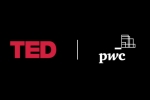In the roughly 30 years since the first commercial internet browser was created, “being digital” has become the mantra for business survival. Digital efforts have been proliferating greatly as companies work to catch up with technological innovation—and COVID-19 massively accelerated the pace.
Yet despite having put so much energy and investment into digitizing, most companies have not gained a competitive edge. In fact, digitizing may have even made things worse as companies dedicated more and more of their cash, time, and energy into simply playing catch-up with their rivals. Being digital—whether that’s having a sophisticated e-commerce engine or using a powerful customer relationship management (CRM) package—isn’t enough anymore. No matter how many digital initiatives you implement, you can’t expect to build real, longterm competitive advantage by being the same as your competitors or doing what you’ve always done—even if you’re now doing it a bit faster and more efficiently than before.
Instead, companies need to move beyond digital. Top companies do this by starting with a big challenge and then building differentiation (digitally) in the capabilities they own. They get their differentiated capabilities right, and then the flow of digital-powered products, services, solutions, and experiences naturally follows. Think about Apple’s design capability, which has allowed it to disrupt every industry it has entered. Or consider Frito-Lay’s rapid flavor innovation, which lets it quickly produce new flavors when it senses demand—for instance, a mac and cheese flavor for Cheetos. Digital technology plays an important role in all these capabilities—but these capabilities involve much more than technology. They require dynamic combinations of a knowledge base, processes, technologies, data, skills, culture, and organizational models that together allow companies to create value in ways that others cannot.
So, what’s the best path forward? In writing our book, Beyond Digital, we conducted, over more than two years, a research effort into a dozen companies whose collective experiences contrast starkly with those focused merely on digitizing. Learning from these dozen organizations’ successes and failures, we identified seven leadership imperatives to go beyond digital and shape the future. Let’s look at each in turn.
1. Reimagine your place in the world
To succeed in this new environment, you must look beyond your current portfolio of businesses and products and determine what value you will create and for whom. You will need to be much more ambitious than you might have imagined just five to ten years ago, thanks in part to the evolution of powerful digital platforms and ecosystems you can now participate in. Whatever your new value proposition is, make sure you have identified a meaningful position that is unique to you and powered by your capabilities.
Fundamentally reconceiving how you create value combines art and science. Looking at data trends and asking customers what they want isn’t enough. You need to develop your own one-of-a-kind point of view on how value will be assessed and created in the future and what capabilities you will need in order to fulfill that value proposition. Be clear about how technology decisions support your capabilities rather than playing the game of investing in every technology solution.
You must look beyond your current portfolio of businesses and products and determine what value you will create and for whom.
Ten years ago, the Amsterdam-headquartered multinational Philips had a sprawling portfolio of businesses that included audio and video consumer electronics, lighting, and medical equipment. Yet it was underperforming market expectations. Under new CEO Frans van Houten, Philips decided to completely reimagine itself. The company reinvented itself as a health-technology company, bringing together Philips’s vast consumer insights and capabilities, its depth in medical-device technologies, and the power of data and artificial intelligence (AI). As Van Houten explains, “I recognized that the chances that we would transform lighting and healthcare simultaneously were not so high. And, so, we made a choice.”
Philips’s beyond digital mission guided the company through a series of major changes that revolutionized its portfolio, business model, and culture. These changes included an exit from businesses that had long been a part of the company’s identity—TV, audio, and video operations; the lighting division; and domestic appliances. Today, Philips’s focus as a health-technology player has resulted in remarkable gains in profitability and shareholder value, the stock price having risen 82% in the five years ending in 2020.
2. Embrace and create value via ecosystems
Many of today’s problems are so massive that no single entity can solve them on its own. These problems can be tackled only by networks of companies and institutions that work together toward a common purpose. For example, think about people’s need for mobility—which requires dealing with public, shared, and privately owned methods of transportation; infrastructure; public 5G networks; energy supply; financing; regulation; and many more factors.
The only way for companies to thrive in this disruptive age is to work with ecosystems and harness the capabilities that others have built in order to deliver their own value propositions—and do so at speed, at scale, and flexibly.
When a labor shortage loomed in Japan’s construction industry in 2013, Komatsu tried to address the problem by introducing ICT (information and communications technology) construction machinery that used GPS, digital mapping, sensors, and internet-of-things connections to enhance efficiency. But leaders quickly saw that the new machines were not resulting in the expected increase in productivity. The reason? Bottlenecks in processes at the construction site. At one highway construction site, for example, Komatsu’s ICT machine could remove and dump 50% more dirt than a conventional machine, but construction companies were unable to schedule and account for the required number of dump trucks to remove the dirt from the site. Moreover, construction companies were unable to accurately forecast the volume of dirt they would be removing. So in 2015, Komatsu created a division to focus on broad solutions, drawing on specific capabilities from an array of other companies and providing a way to connect all the people and companies involved in the construction and production tasks digitally. With so much now visible, companies across the ecosystem could collaborate to increase efficiency and productivity. Beginning in 2017, Komatsu launched an open platform, Landlog, that both suppliers and construction companies could plug into to make sites smarter and safer. As a result, to cite just one example, drones can complete a survey of a typical construction site in four to six hours, down from two weeks, and Landlog can then integrate the data gathered by the drones to program automated bulldozers. Customers report being able to complete the construction job twice as quickly as they would using traditional approaches, saving money and reducing pressure on overstretched construction workers.
By the end of 2020, Komatsu had introduced its ecosystem-driven platform to more than 10,000 construction worksites in Japan, and it has now expanded the proposition to other countries, including the United States, the United Kingdom, Germany, France, and Denmark.
3. Build a system of privileged insights with your customers
Customers have always been demanding. But as markets have become more diverse, dynamic, and complex, the expectations for service, consistency, and trust have changed utterly. At the same time, opportunities for data collection, storage, and analysis have exploded. And the one tool that companies have used to get to know their customers, market research, is not equipped for this new world.
As the Komatsu ecosystem shows, building a system of privileged insights—insights that you, uniquely, have about your customers—requires much more than buying market research. It demands that companies establish a solid foundation of purpose and trust. After all, customers share their most useful and private information with you, but only if the value you offer in exchange resonates with them and they trust you to make good use of their data. Building on this foundation, companies can then focus on solving their customers’ most important problems (for example, by listening to customers across the entire spectrum of their interactions). You can use the privileged insights you gain to systematically strengthen your value propositions, capabilities systems, and products and services offered.
In fact, gaining privileged insights may become one of your most important capabilities. The better your insights, the more you can increase your value for customers. The more you improve your value propositions, the more trust you generate by delivering on your promises and the more customers engage with you. The more customers engage with you and trust you, the more you remain connected with and relevant to them—no matter what changes happen in the world around you.
In 2014, Adobe, the San Jose, Calif.–based software company, pivoted away from selling its widely used applications (such as Photoshop, Illustrator, and InDesign) as packaged products, mostly as CDs via third-party sellers, and began offering applications as cloud-based, software-as-a-service (SaaS) solutions via direct subscription. That change was just the start. Adobe reconfigured its operating model around the newly available data and consumer insights—and supercharged its business. Before the move, basically all Adobe knew was when a customer registered a product. Moving to the SaaS model gave the company the ability to see how customers were using its applications in real time.
The more customers engage with you and trust you, the more you remain connected with and relevant to them—no matter what changes happen in the world around you.
Adobe then reoriented much of its value-creation model—and organizational structure, as a logical next step—around customer insights. The company saw that some neglected apps were actually driving tremendous value for customers. Other insights led teams to divert resources, deliver new on-boarding experiences, and provide instant help. Adobe was able to detect that, say, a Photoshop customer was becoming frustrated while editing a photo and suggest a filter, another fix,or a tutorial.
Adobe’s leaders credit most of the company’s revenue growth, from US$5.9 billion in 2016 to $12.9 billion in 2020, to its data-driven insights capability. And Adobe’s success in early 2019 led it to launch the Adobe Experience Platform, which allowed it to sell its insights system to other companies, opening a whole new revenue stream.
The data and technology imperative
As you go beyond digital, you will need to make sure you address the underlying data and technology needed to support your differentiating capabilities, including your privileged-insights system. Your differentiating capabilities will need to be fed by privileged insights, which in turn will need to be fed by data, and that data will need to be supported by the right technology to capture it and create insight. In short, you will struggle to succeed with capabilities-based differentiation without a data and technology strategy that supports it. Too many companies suffer from data and technology investments that are siloed by function or business and not clearly connected to the company’s value creation strategy. To go beyond digital, you will need to make a priority of your data and technology strategy and be able to clearly and tangibly demonstrate how it directly enables your company’s place in the world and your plan for value creation and preservation.
The technology that helps companies capture data and turn it into insights exists and continues to quickly be innovated. Cloud-based enterprise resource planning (ERP) solutions, on-demand storage, connected sensors, machine learning and AI tools, and many other technologies designed to collect, process, and analyze data rapidly, flexibly, and creatively abound. The challenge often is to make choices among the abundance of options, and to sequence those choices in such a way that they reinforce one another and lead to a measurable impact.
As you consider how to shape your technology and data agenda, we offer some questions that may help you prioritize what is right for your company:
- Is the technology investment contributing to the heart of your differentiating capabilities, or is it supporting other needs?
- Is the investment supporting you in building for tomorrow or securing today? What impact will the investment have on your company’s place in the world?
- Can you clearly and honestly measure and quantify the business impact in terms of value creation or value preservation? Does the investment measurably pay for itself, or is it based on assumptions that can be validated only in the future? (Note: if the investment cannot demonstrably pay for itself and is based on assumptions that you cannot validate today, then it is very likely not granular enough and not planned well enough to approve.)
- Can you acquire and retain the talent critical to developing that technology and making it relevant for your business? Is it essential to your differentiating capabilities to build the talent base within your organization?
- Does the technology capability you need already exist somewhere in your ecosystem or in the broader supplier market? Can you tap into it while protecting your differentiating capabilities and not putting your competitive advantage at risk?
- Can you build reliable partnerships and relationships to execute with a balance of speed and efficiency?
- Are all the stakeholders who need to change to realize the value of your technology investments committed to doing so? Can they be held accountable? Do you have the governance model in place to ensure and enforce individual and collaborative accountability?
- Are your organization and culture ready for change? Can you ensure that your people can incorporate the technology you build?
This is a starter list and certainly not exhaustive. However, working through these questions can help you address the essential success factors needed to shape the data and technology strategy that will support your beyond digital vision.
4. Make your organization outcome-oriented
Creating value by scaling up a few differentiating capabilities requires a new model of working and teaming, given the gigantic lift some of these capabilities will require as you deliver a bolder value proposition. You can’t get away with plucking people out of their functional roles and asking them to work together 10 to 20% of their time, or for six weeks or six months (in the famous, but typically frustrating, cross-functional team). Instead, you will have to build more durable, outcome-oriented teams that bring together the needed expertise, knowledge, technology, data, processes, and behaviors from across the organization.
This sort of thinking will let you shift from the old functional and fixed organization to a model of outcome-oriented teams that work across organizational boundaries to deliver your capabilities. These teams will coexist with the corporate offices, business units, functions, and shared services, but will increasingly become more prominent elements of the organization.
Honeywell’s aerospace division initiated its vision of outcome-oriented teams back in the late 1990s, when leaders started to think about how advances in digitization, communications, and connectivity might create opportunities. Its aviation businesses made products such as engines, brakes, navigation gear, and avionics. They also provided services such as airplane maintenance and flightinformation software. It took a decade for the underlying technologies to catch up to Honeywell’s vision, but by 2010 Honeywell Aerospace was mapping out how products and services could be brought together as a “connected aircraft” business. The business would add significantly more customer value than the sum of its parts—by offering improved power and fuel usage, predictive maintenance, more precise flight planning, and real-time, crowdsourced weather information.
Honeywell realized that a major reorganization of its aviation products and services business would be needed to bring the right people, skills, and capabilities together. The company had long built planes in a methodical fashion, with functions that were segregated, but now had to build solutions that crossed boundaries between engines and avionics and electronics.
A radical organizational change brought IT, data analytics, and engineering people from their home functions into one team and granted authority for extensive hiring of those with needed new skills. As the transformation got underway, new teams were tasked with rethinking how legacy offerings that had existed as stand-alone products could be reimagined to operate in a broader, networked environment.
Today, Honeywell Connected Aircraft is an $800 million business and is considered by many analysts to be the market leader in the connected aircraft space. The Honeywell Forge flight efficiency platform was adopted by 128 airlines and more than 10,000 aircraft globally in its first year on the market.
5. Invert the focus of the leadership team
Just as your company needs a strategic effort to build the right differentiating capabilities, your leadership team will need new skills and mechanisms to shift to this new form of value creation. Step back and start thinking from a clean sheet: Do you have the right roles? Do you have the right people? Are you focusing on the right things? Are you driving the transformational change required or spending most of your time responding to the organization’s short-term needs? Are you working together effectively?
Building complex, digitized differentiated capabilities requires bold thinking, strong decision-making, and tremendous energy. That means your leadership team must lead in a different way. It’s no longer enough to have your staff report on what they’re doing and provide their views of various topics based on the urgent needs of the moment. The leadership team must set an aggressive agenda and work together to accomplish big things.
When Eli Lilly ran into trouble in the late 2000s, as patent protection was about to expire on four drugs that accounted for 40% of the company’s revenue, then CEO John Lechleiter insisted, “We are going to innovate our way out of this problem.” And they did—largely by inverting the focus of management.
Step back and start thinking from a clean sheet: Do you have the right roles? Do you have the right people? Are you focusing on the right things?
As part of a change in operating model, Lechleiter instituted massive changes in the top team. Up until 2009, the top team was known as the Policy Committee, and nine of the 13 members represented functions, while only three had operational responsibilities. The imbalance seemed to be both a symptom and a cause of strategic and operational shortcomings. Lechleiter set up a newly named Executive Committee and added the heads of the five business units to the team, while reducing the number of leaders with functional responsibilities to five. Overall, eight of the 13 members of the Executive Committee were new to that team, and two had been hired from the outside. The mix of backgrounds of the top team members also changed dramatically.
“The dynamic completely flipped,” says Stephen Fry, head of HR. “On the old committee, the majority of people believed their job was to be the checks and balances to people who were actually leading the business. The new committee had a majority of people who had P&Ls and operational responsibility, and the discussion in the room became much more business execution–oriented.”
By 2016, Lilly was firmly back on a path of profitable growth. Over the next five years, the stock price tripled.
7. Disrupt your own leadership approach
Despite the uniqueness of each journey, we have observed a common set of characteristics among the leaders who transformed their company, both in our work with leaders around the world and in our research for this book. These characteristics also align well with the six paradoxes of leadership described in our PwC colleague Blair Sheppard’s recent book, Ten Years to Midnight.
In sum, modern leaders need to be both strategists and executors, both tech-savvy and deeply human, adept at both forming coalitions and making compromises while being guided by their integrity. At the same time, they need to be humble and understanding of their limitations. They also need to constantly push for innovation while being grounded in what they are as a company. And they must be globally minded as well as deeply rooted in their local communities.
A recent survey conducted by PwC Strategy& highlights the importance of the six leadership paradoxes, but also the degree to which many leaders are struggling with these new demands.
Leaders’ assessment of the importance of and their proficiency in the six paradoxes of leadership
Although those combinations may seem like a long list of paradoxes, we came across many stories of executives who managed to reconcile them. For instance, Howard Schultz upon his return to Starbucks as CEO in 2008 showed what a strategic executor looks like. Holding to his original vision for Starbucks as a “third place” beyond office and home, Schultz focused on details—ending the use of flavor-locked bags of beans, so coffee aromas would again fill the stores as baristas scooped beans out of bins and ground them; relocating big espresso machines so customers could again see the baristas making drinks; removing products from around the cash register that, while generating revenue, detracted from what he saw as the experience that distinguished Starbucks from competitors such as McDonald’s and Dunkin’ Donuts.
Being acutely aware of the needed characteristics will help you be deliberate about your development and surround yourself with people who will complete your leadership profile.
Creating an interlocking system of change
Working on all seven imperatives creates a true interlocking system that will make your company fit for the challenges ahead as the world moves beyond digital. Consider what will happen if you overlook one of them. When you aren’t definite about your company’s place in the world, for example, you won’t have a clear purpose that’s rooted in how you create value for customers. You’ll lack a North Star for making decisions about who’s in your ecosystem and how you should partner with them. When you don’t build a system of privileged insights with customers, you won’t understand how their wants and needs evolve—or how you should evolve with them. When you don’t make your organization outcome-oriented, your people will have difficulty working across silos and will struggle to build differentiated cross-functional capabilities.
Yet embracing any one of those imperatives helps your efforts in the others. Working in an ecosystem, for example, allows you to glean deeper insights into more customers from more angles. You can also combine forces with ecosystem partners, offer greater value to customers, and occupy a more ambitious place in the world. And you strengthen the capabilities of your leadership team by giving them a chance to see intimately how other companies work. In a similar spirit, reinventing the social contract with your people and engaging them meaningfully enables them to contribute to shaping both where your company is headed and how it’s going to get there.
But these challenges should not be used as excuses for staying with current business models. Without a more fundamental business transformation, digitization is a road to nowhere. Although it’s easy to digitize and catch up to competitors, your stakeholders—shareholders, customers, and employees—demand much more. As Peter Drucker famously said, “Management is doing things right; leadership is doing the right things.” Now is the time for executive teams to step up, disrupt themselves, and become leaders in the digital age.
Excerpted from Beyond Digital: How Great Leaders Transform Their Organizations and Shape the Future, by Paul Leinwand and Mahadeva Matt Mani. Copyright 2021 by PwC. Reprinted by permission of Harvard Business Review Press.
Want to take “Seven imperatives for moving beyond digital” with you? Download as PDF
Beyond Digital: How great leaders transform their organizations and shape the future
Digital transformation is critical. But winning in today's world requires more than digitization. It requires understanding that the nature of competitive advantage has shifted—and that being digital is not enough. It’s time to move beyond digital.

Paul Leinwand
Principal, Strategy&, PwC United States

Mahadeva Matt Mani
Partner, Strategy& Netherlands
The Leadership Agenda
Sharp, actionable insights curated to help global leaders build trust and deliver sustained outcomes. Explore our latest content on the global issues affecting organisations today from ESG to value creation, technology and cyber to workforce transformation.
Explore now


















